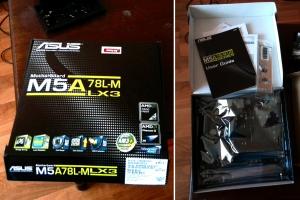The standard for the Toy Terrier breed was developed in Russia in the 60s, but at that time the popular Russian Toy Terrier mini breed had not yet been developed. Numerous attempts at selection abroad over many years have led to the appearance of this breed in different variations: long-haired and smooth-haired. And in the early 80s, the mass import of these graceful dogs to Russia began. The first club appeared for toy terriers in 1996, and recognition of the breed came only in 2006, then the International Canine Federation officially recognized the breed at the highest level. So what are the features of caring for a mini toy terrier at home? How to carry it out correctly and what you need to know about dogs before giving in to fashion when buying a puppy?
Generally accepted standards for mini toy terriers
It is a small, elegant dog whose format is considered to be square. Her behavior is overly active, always cheerful, in most cases non-cowardly and does not show aggression. The color of the nose to match the fur (in most cases) is black, the size is small. The eye sockets are large for its size, slightly convex, round in shape, set wide and straight, and black in color. The size and shape of the ears are large, thin, high-set, erect. The tail is short due to docking (ideally 2–3 vertebrae), erect. Standards allow an undocked tail in a sickle shape, but it must be kept level with the line of the back. There are two varieties: the Toy Terrier is smooth-haired and long-haired. Color plays an important role: black and tan and brown and tan are the most common, but there is also blue and tan and red (with or without a tint). A height of 20–28 cm at the withers is considered standard. Weight range may vary but should not exceed 3kg.

How to care for a mini toy terrier: walks, dog space, attention to the pet’s fur
There are several rules for caring for this breed that you need to know. Otherwise, this breed is unpretentious and does not require a lot of time and effort in the process of its life.
- Grooming. In the usual sense, for a person, purchasing a dog means hassle with haircut, trimming or daily combing, but not for this breed. This dog is smooth-haired and its presence in a house where there are allergy sufferers does not pose a threat. Maximum care for her coat consists of bathing and nothing more.
- Walks. As for any dog, walks for a toy terrier are important for full health and development, but for the purpose of relieving needs, they are not at all necessary. This breed is loved because it can be trained to a litter box or a disposable diaper within an apartment.
- Things for everyday use. A dog seat is a must when purchasing a toy terrier puppy. It should be secluded, warm, inaccessible to children. Pets love to spend their free time there in the absence of their owners and steal various interesting items there: toys, candies, knitwear and even their own food. Regarding food: very often you can find puppies or adults who have a wonderful habit of hiding leftover food in various hard-to-reach places. These can be rugs, cracks in furniture, your own dog place and other secluded corners.

Care for the Russian Toy Terrier: eyes, ears, claws and anal glands
- Eye care. It is necessary to inspect the dog's eye sockets daily for discharge. If any are noticed in the corners, it is not necessary to immediately run in panic to the veterinarian, but simply wet a cotton pad with warm water and remove the excess secretion.
- Ear care. Ears, like eyes, also require vigilant attention. There should not be an unpleasant odor or excessive accumulation of wax in the ears. They should be treated with an ear swab or cotton pad along the inner visible part of the ear, without going far beyond it.
- Claw care. This is the most problematic area for this breed due to the fact that few owners pay much attention to walks. If a dog spends most of its time in an apartment, its nails do not wear down naturally, so they have to be trimmed. When and how often should I do this? This is noticeable by external signs: they become long, curl up, and interfere with walking. You can purchase special nippers and do it yourself at home, or you can go to a veterinary clinic.
- Caring for the anal glands. Unless there is obvious cause for concern, the anal glands do not pose a problem during a dog's development. You should pay attention and take action if your pet’s teeth become filled with odorous liquid. Outwardly, this manifests itself as follows: the terrier fidgets and itches this area on the carpet. With such signs, you should independently help free the glands from excess secretion: press with two fingers in the lower part and side of the anus at the same time, and release the places where the secretion accumulates.
This video describes the proper care of a mini toy terrier.
What should you not do when caring for a Russian Toy Terrier?
- Accustom to your own bed, sofa, high chair - a fall can cause injury to your pet.
- Lift from the floor by grabbing the dog by the side, paw or abdominal area.
- Leaving your pet alone at late times without a light source.
- Taking away objects by pulling on the part of them that sticks out of the dog’s mouth - this contributes to the formation of a malocclusion. It’s better to open Toy’s jaw and free it from the thing.
This video lists the problems and difficulties encountered when raising small dogs. Be sure to leave your questions, suggestions and









